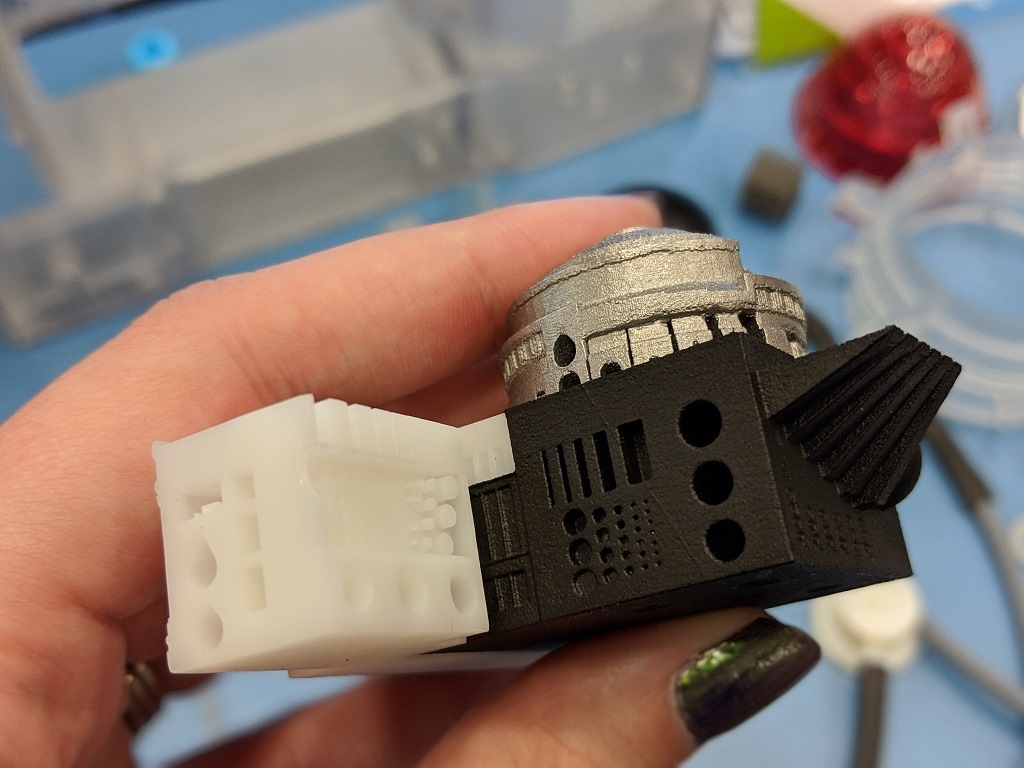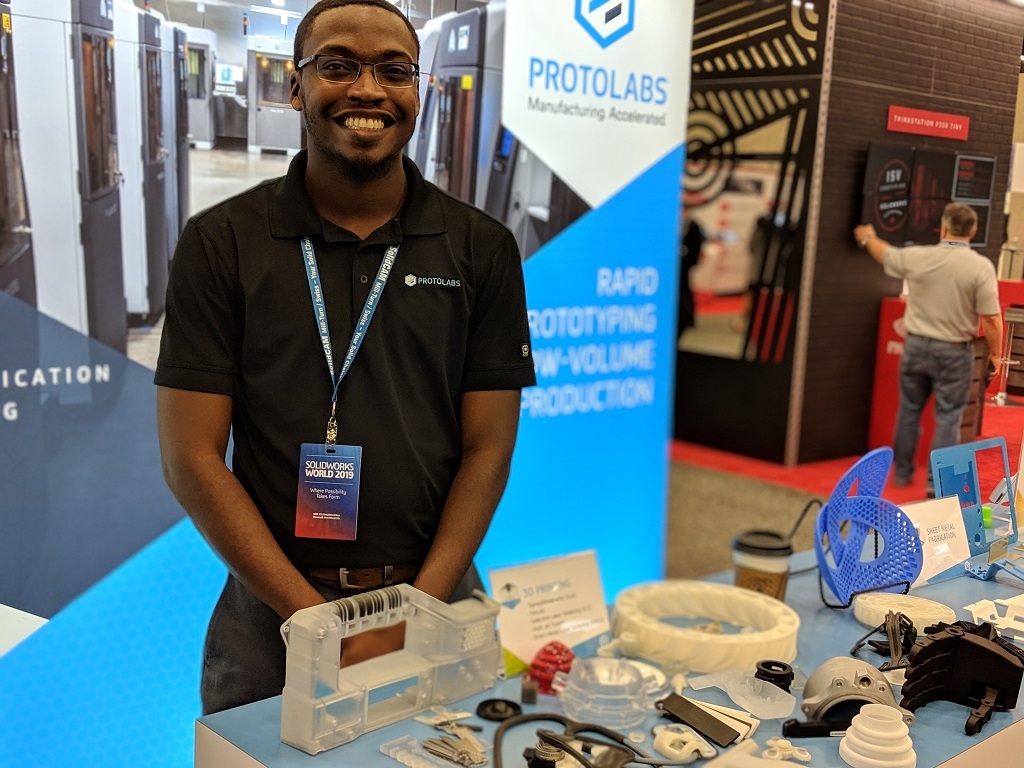![Troy Williams [Image: Fabbaloo]](https://fabbaloo.com/wp-content/uploads/2020/05/protolabstroy_img_5eb09c1dcbc50.jpg)
How do we know there’s real-world demand for 3D printing? Installations.
Demand for on-demand manufacturing is kicking up — and a good amount of that can be traced to the influence of digital manufacturing. So manufacturing service providers have been responding in kind, increasing their installed capacity. Watching those numbers can provide an interesting look into how, exactly, actual demand is shaping up.
Conversations with service providers often provide some interesting food for thought on the realities of a changing production environment. And so it was that I walked away from a recent chat with Protolabs application engineer Troy Williams with a few notes and many thoughts.
I’ve known the team at Protolabs for a few years now, and in a past life (last year), visited their dedicated additive manufacturing facility in North Carolina. The 77,000-square-foot facility housed, as of my visit, more than 100 SLS, SLA, PolyJet, MJF, and DMLS 3D printers.
“We have more capacity in 3D printing, especially DMLS,” Williams told me as we caught up. “There’s been an increase in prototyping and on-demand manufacturing interest.”
![DMLS lattice detailing [Image: Fabbaloo]](https://fabbaloo.com/wp-content/uploads/2020/05/protolabsdmls_img_5eb09c1e4a7ab.jpg)
Some of this interest has come from the aerospace industry, which has time and again proven a solid market for 3D printing. Especially helpful for Protolabs, Williams noted, is its ISO 9001 certification for nylon processes — certainly underscoring the importance of having this type of quality certification. That ISO certification has been driving business from aerospace, Williams noted. And establishing that relationship can be an important foot in the door to working more deeply with a technology-agnostic manufacturing solutions provider.
Much of the increase in demand-driven capacity is in DMLS, as Protolabs has been developing expertise in the metal technology. Capacity is now around a dozen each of Concept Laser’s M2 and Mlab machines.
“We’ve had a lot of questions around DMLS,” Williams revealed of the experience at Protolabs’ highly-trafficked booth at SOLIDWORKS World. “It’s one of the technologies with a lot of growth potential. People have been really interested because you can get 99.8% dense parts with mechanical properties very comparable to traditional metal production. It’s been a real draw and a big focus on traffic to the booth.”


Metal 3D printing was such a draw, indeed, that Desktop Metal CEO Ric Fulop (above) dropped by during our chat to point to the top of an example part I was examining that’s made of a few 3D printing technologies. The model, created for MIT’s ADAPT consortium, is also indicative of Protolabs’ interest in fostering the future of additive manufacturing as education plays an ever-increasing role.
The multi-material model was also indicative of Protolabs’ growth in 3D printing. The company started with SLA many years ago and still sees great use from its legacy 3D Systems machines. Some of the systems have been revamped to meet the needs of the team, further highlighting their deep understanding of the technologies in use.
![Parts created with a variety of 3D printing technologies [Image: Fabbaloo]](https://fabbaloo.com/wp-content/uploads/2020/05/protolabsparts_img_5eb09c1f88020.jpg)
The North Carolina facility is shaped like a V, with dedicated areas to each of the five 3D printing technologies Protolabs houses.
That is, the five currently housed; the team is evaluating other technologies and we may have more word on some (smart, I think) addition/s to their offerings later this year.
One important part of maintaining a manufacturing service is keeping an eye on developments — especially with tech so fast-growing as 3D printing. The in-house team of engineers at Protolabs are all experienced with the systems they work with every day, and building up that kind of expertise is important both to the company as a business and to the customers they serve.
Working with service bureaus can be a foot in the door for people new to 3D printing. Rather than, or before, investing in an expensive new industrial machine, it helps to validate that the results will be the right fit. Some choose to continue to work with the service bureau, as it has both means and expertise to create projects to order, establishing long-term relationships for prototyping or low-volume production. Giving more options in materials and output quality can help broaden the needs to be addressed.
And clearly, there are needs to be addressed.
With Protolabs increasing the number of 3D printers in its stables, both with recent installations and with the potential for adding new technologies, we can see another indication that the users are out there today, and ready for more.
Via Protolabs











A blog post reveals much of what happens behind the scenes at 3D print service Shapeways.